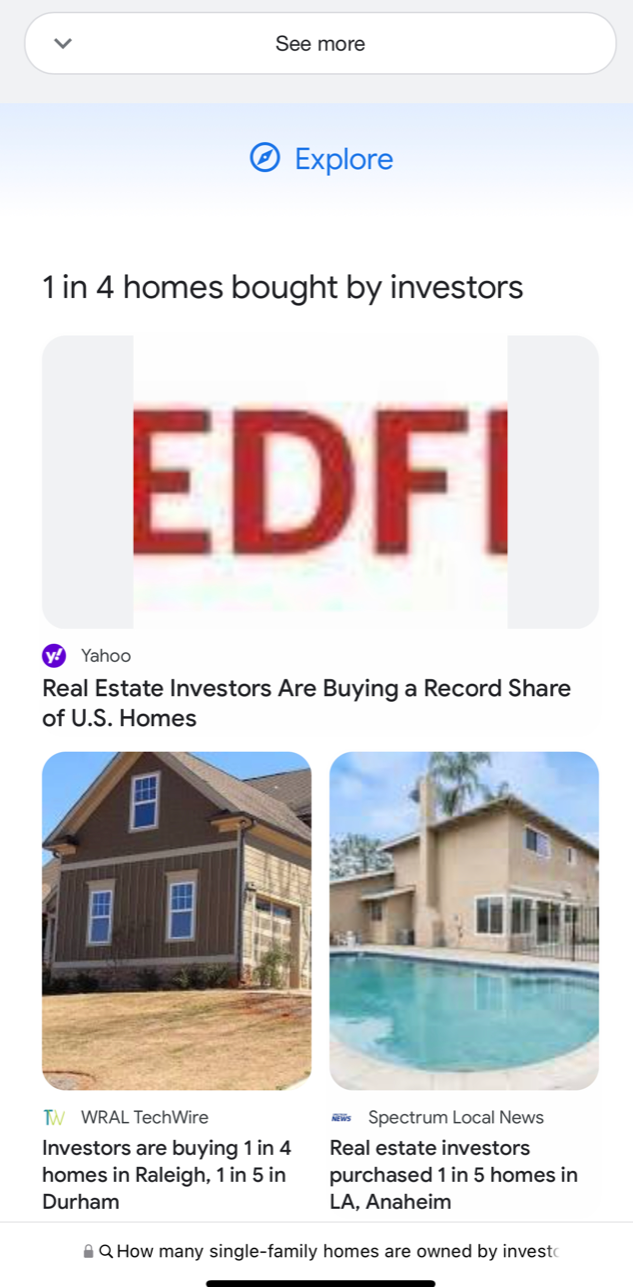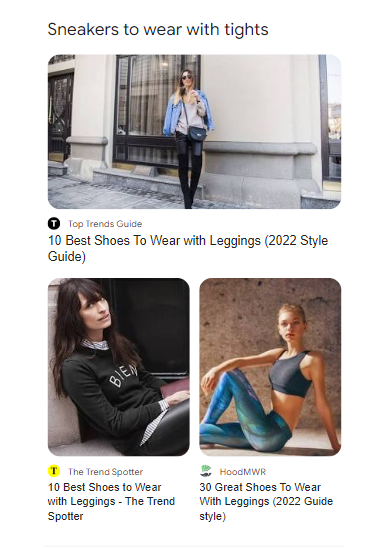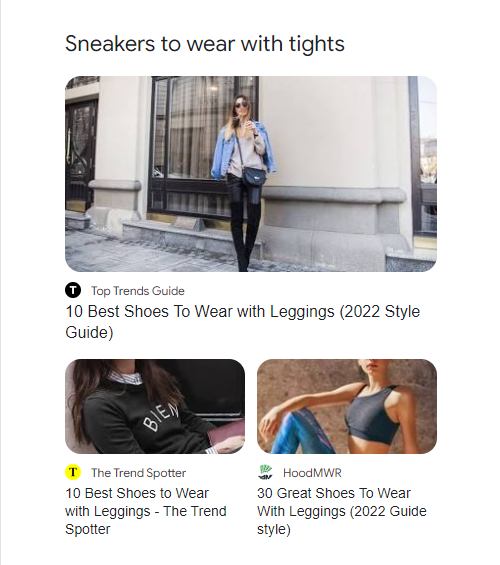




Last updated: July 3, 2022.
Google added the Explore feed to search results pages in 2022, likely in June. The Explore feed essentially works as an alternative continuation of the initial set of search results. The Explore feed is image heavy and provides topically more specific groups of results. This feature presumably takes advantage of various Artificial Intelligence, Machine Learning, and Natural Language Processing algorithms and methods that Google has developed over the last few years.
Visually the Explore SERP feature looks more like the Google Discover feed than traditional search results. Presumably, Google is going to use Explore to improve its various algorithms as well as capture user-level clickdata to help determine what to put in personalized Discover feed. However, the visual similarities don't mean the Explore section is fundamentally similar to the Discover feed.
The short and long-term importance of Explore is unknown and depends on how many users find their way to it, which in turn is likely highly dependent on where in a SERP Google surfaces the feature. In traditional Search Engine Optimization, any result after the first 10 would have relatively little value. Presently, I have yet to spot an Explore Feature that appears before the 10th organic search result. However, it may be that users are more willing to scroll on mobile. It could also be that Google decides to surface Explore sooner, perhaps after the fifth result, which presumably would increase the value of being linked from the feature.
It is also unclear what volume of queries and searches trigger the feature. Nor is it known how many many sub topics there can be in Explore. It seems reasonable to assume that fourth link in a Feature is more likely to get a click than the 25th link.
Below is a series of screengrabs that show the Explore feature for query [how many single-family homes are owned by investors]:





The sub headings - for example "1 in 4 homes bought by investors" - are links to Google search results for that query ([1 in 4 homes bought by investors]). However, the the links contained in the Explore section are not necessarily to pages that are also linked from the linked SERP (for example [1 in 4 homes bought by investors]). Apparently the fetch or selection algorithm for the Explore section is somewhat different from the core search algorithms ranking system.
It is possible that Explore is conceptually similar to the Explore panels that were phased out in February 2021. The Explore panels were often used for queries that involved two entities with a relationship, for example [Bill Belichick New York Giants]. The Explore feature may also be initiated for queries that involve multiple related entities or queries that contain an entity certain attributes related to that entity.
Of the six articles I've checked that are included in the Explore feature have Article structure data mark up. It may be that such markup is necessary to be eligible for inclusion.
About 40 organic results precede the Explore feature. The Explore Feature has 11 subtopics. Each subtopic has a title that also serves as a link to the SERP for the title text, and three links. Each link consists of a an image, a favicon (or possibly small logo), the name of the publication and the title of the web page. The first link has a much bigger, full-column wide hero than the other two links.
This is what it looked like on July 1:
![The first of ten screengrabs of the Explore feature for the query [what type of sneaker is best for running]](/images/what-type-of-sneaker-is-best-for-running-1.png)
![The second of ten screengrabs of the Explore feature for the query [what type of sneaker is best for running]](/images/what-type-of-sneaker-is-best-for-running-2.png)
![The third of ten screengrabs of the Explore feature for the query [what type of sneaker is best for running]](/images/what-type-of-sneaker-is-best-for-running-3.png)
![The fourth of ten screengrabs of the Explore feature for the query [what type of sneaker is best for running]](/images/what-type-of-sneaker-is-best-for-running-4.png)
![The fifth of ten screengrabs of the Explore feature for the query [what type of sneaker is best for running]](/images/what-type-of-sneaker-is-best-for-running-5.png)
![The sixth of ten screengrabs of the Explore feature for the query [what type of sneaker is best for running]](/images/what-type-of-sneaker-is-best-for-running-6.png)
![The seventh of ten screengrabs of the Explore feature for the query [what type of sneaker is best for running]](/images/what-type-of-sneaker-is-best-for-running-7.png)
![The eighth of ten screengrabs of the Explore feature for the query [what type of sneaker is best for running]](/images/what-type-of-sneaker-is-best-for-running-8.png)
![The ninth of ten screengrabs of the Explore feature for the query [what type of sneaker is best for running]](/images/what-type-of-sneaker-is-best-for-running-9.png)
![The final of ten screengrabs of the Explore feature for the query [what type of sneaker is best for running]](/images/what-type-of-sneaker-is-best-for-running-10.png)
The eleven sub topics in the Explore feature:
Most but not all of the linked pages have structured data markup:
The depth of the article-style markups vary from basic to exhaustive.
The 33 links go to a total of thirty different web sites. None of the websites are linked from two different sub topics.
How does Google evaluate Explore?
What determines how quickly the feature is displayed? For [how many single family homes are owned by investors] the feature appears after 10 organic results. For [what type of sneaker is best for running] it's about 40. Is the Explore surfaced early if Google isn't confident in the depth of quality results for the query? Or is it more related to the closeness between the query and the sub topics?
Is the purpose of Explore to better understand the query intent?
The Explore feature is strikingly visual in its design. Every link has an associated linked image.
Images are made to fit their allotted space with the CSS declaration object-fit:cover. The default size of the smaller thumbnails appears to be 185x232. The sub-topic her thumbnails are 380x200. However, on some viewport aspect ratios the small thumbnails are displayed as 180x95. These two defaults can result in images being cropped unexpectedly compared to the original. The following two screengrabs illustrate the difference.
At 500x883 pixels viewport width and height:

At 500x650 pixels viewport width and height:

I have not seen the Explore column wider than 412 pixels. On viewports wider than that the columns either stays at 412 pixels or the Explore section goes away altogether. The widest viewport I've seen Explore appear on is 770 pixels. However, it may be that it isn't surfaced on some devices with a more narrow viewport.